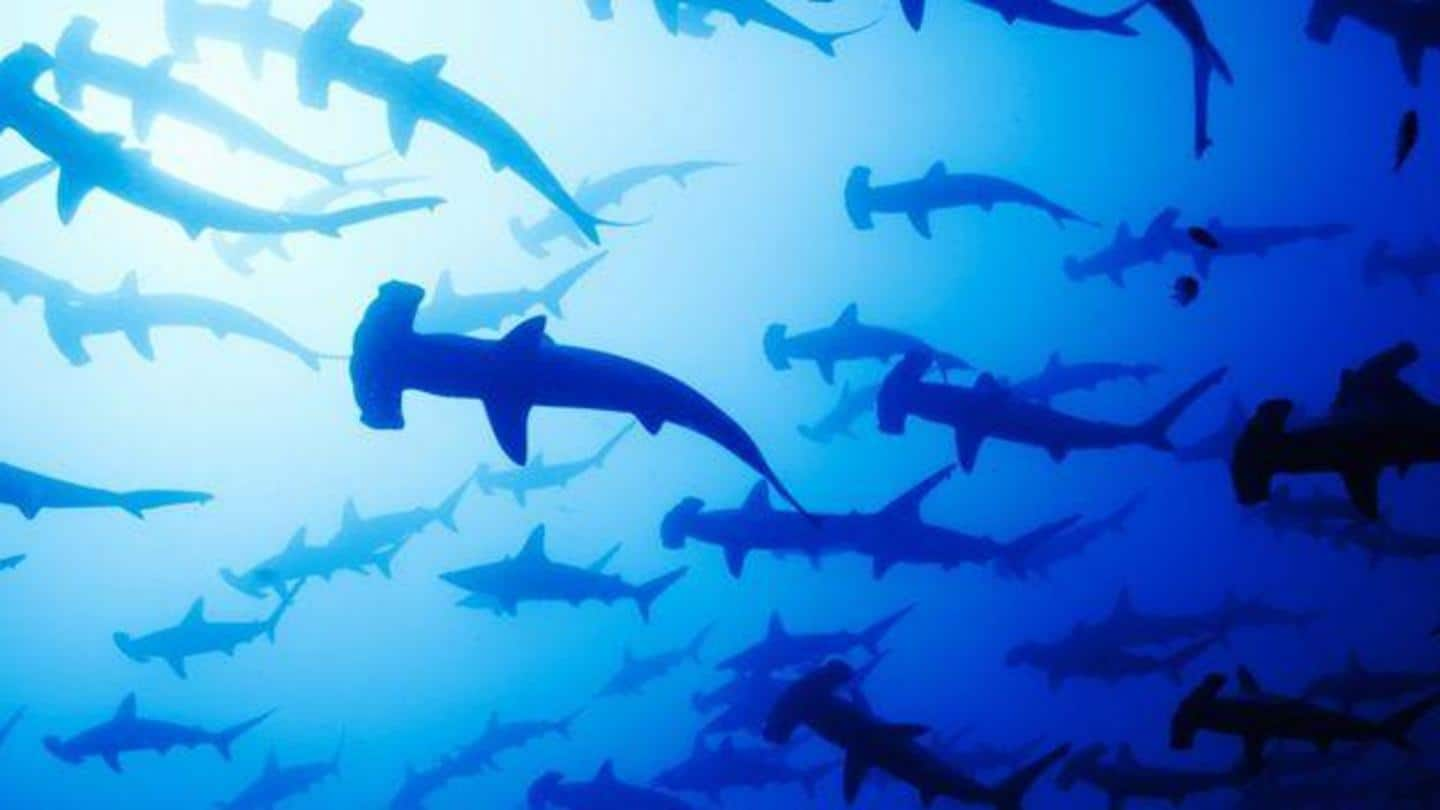
Population of oceanic sharks and rays declines by 70 percent
What's the story
According to a study, the number of oceanic sharks and rays worldwide has fallen by 71 percent over the last 50 years. It found that some formerly abundant, wide-ranging species including the Great Hammerhead, have declined steeply and are now classified as critically endangered. The study, published in the journal Nature, found that three-quarters of these species face an elevated risk of extinction.
Information
In Indian Ocean, their population is continually declining
In the Indian Ocean, shark and ray abundance has declined continually since 1970, falling by 84.7 percent in total. The exploitation of fish stocks relative to the number of fish left has increased 18-fold. Catch limits are now urgently needed to avert population collapse.
Research and findings
This will have a huge impact on our ecosystem: Researchers
The team, including researchers from the University of Exeter, warns that extinction among these species will jeopardize the health of ocean ecosystems and food security in many poor and developing nations. "The species are some of the ocean's apex predators. They seem immune to the direct impacts of humans. But global analysis points to some staggering declines," said Richard Sherley from Exeter.
Other findings
Science-based fishing restrictions need to be enacted
The study found that all the oceanic shark and ray species, except for the Smooth Hammerhead, decreased in abundance over the last half-century. The research highlights the risks these species face if no immediate action is taken to limit the pressure fishing exerts on their population. The data also demonstrated that these long-lived animals can recover if science-based fishing restrictions are enacted and enforced.
Information
Research is based on two biodiversity indicators
The Living Planet Index on global population changes since 1970 and the Red List Index, which tracks changes in relative extinction risk were the indicators used. Zoological Society of London manages the LPI and the International Union for Conservation of Nature looks at the RLI.
Decline
Tropical areas are seeing a steeper decline
The researchers said 24 of the world's 31 oceanic shark and ray species are now classified as vulnerable, endangered, or critically-endangered on the International Union for Conservation of Nature (IUCN) Red List. These categories mean a high, very high, or extremely high risk of extinction in the wild. The study found that species in tropical areas are declining more steeply than those elsewhere.
Information
Matured species have shown signs of rebuilding: Research
Notably, the researchers further said, "The longest-lived, late-maturing species initially declined faster than those with shorter generation times, but two of these species including the Great White Shark have shown signs of regional rebuilding since the early 2000s."